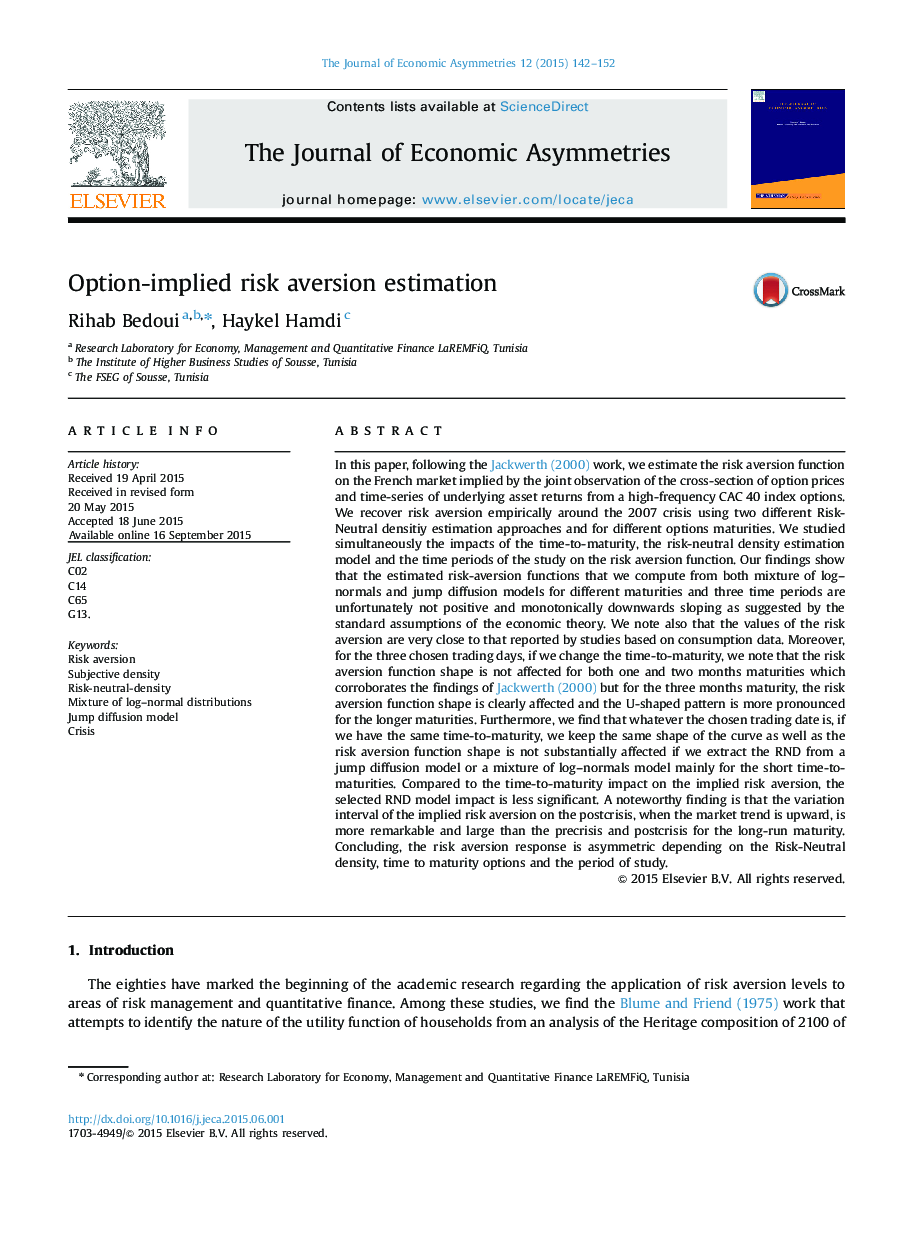| کد مقاله | کد نشریه | سال انتشار | مقاله انگلیسی | نسخه تمام متن |
|---|---|---|---|---|
| 5097697 | 1478605 | 2015 | 11 صفحه PDF | دانلود رایگان |
عنوان انگلیسی مقاله ISI
Option-implied risk aversion estimation
ترجمه فارسی عنوان
برآورد غلط بودن ریسک احتمالی
دانلود مقاله + سفارش ترجمه
دانلود مقاله ISI انگلیسی
رایگان برای ایرانیان
موضوعات مرتبط
علوم انسانی و اجتماعی
اقتصاد، اقتصادسنجی و امور مالی
اقتصاد و اقتصادسنجی
چکیده انگلیسی
In this paper, following the Jackwerth (2000) work, we estimate the risk aversion function on the French market implied by the joint observation of the cross-section of option prices and time-series of underlying asset returns from a high-frequency CAC 40 index options. We recover risk aversion empirically around the 2007 crisis using two different Risk-Neutral densitiy estimation approaches and for different options maturities. We studied simultaneously the impacts of the time-to-maturity, the risk-neutral density estimation model and the time periods of the study on the risk aversion function. Our findings show that the estimated risk-aversion functions that we compute from both mixture of log-normals and jump diffusion models for different maturities and three time periods are unfortunately not positive and monotonically downwards sloping as suggested by the standard assumptions of the economic theory. We note also that the values of the risk aversion are very close to that reported by studies based on consumption data. Moreover, for the three chosen trading days, if we change the time-to-maturity, we note that the risk aversion function shape is not affected for both one and two months maturities which corroborates the findings of Jackwerth (2000) but for the three months maturity, the risk aversion function shape is clearly affected and the U-shaped pattern is more pronounced for the longer maturities. Furthermore, we find that whatever the chosen trading date is, if we have the same time-to-maturity, we keep the same shape of the curve as well as the risk aversion function shape is not substantially affected if we extract the RND from a jump diffusion model or a mixture of log-normals model mainly for the short time-to-maturities. Compared to the time-to-maturity impact on the implied risk aversion, the selected RND model impact is less significant. A noteworthy finding is that the variation interval of the implied risk aversion on the postcrisis, when the market trend is upward, is more remarkable and large than the precrisis and postcrisis for the long-run maturity. Concluding, the risk aversion response is asymmetric depending on the Risk-Neutral density, time to maturity options and the period of study.
ناشر
Database: Elsevier - ScienceDirect (ساینس دایرکت)
Journal: The Journal of Economic Asymmetries - Volume 12, Issue 2, November 2015, Pages 142-152
Journal: The Journal of Economic Asymmetries - Volume 12, Issue 2, November 2015, Pages 142-152
نویسندگان
Rihab Bedoui, Haykel Hamdi,
